Advertisements
Advertisements
Question
Three angles of a quadrilateral are equal. If the fourth angle is 69°; find the measure of equal angles.
Solution
Let each equal angle be x°
x + x + x + 69° = 360°
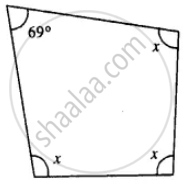
3x = 360°- 69
3x = 291
x = 97°
Each, equal angle = 97°
RELATED QUESTIONS
In a quadrilateral, define of the following Angles .
In a quadrilateral, define of the following Opposite angles .
Complete of the following, so as to make a true statement:
A quadrilateral has ..... vertices, no three of which are .....
Complete of the following, so as to make a true statement:
The number of pairs of adjacent angles of a quadrilateral is .......
Complete of the following, so as to make a true statement:
The number of pairs of opposite angles of a quadrilateral is .......
In Fig. 16.19, ABCD is a quadrilateral.
Name a pair of adjacent sides.
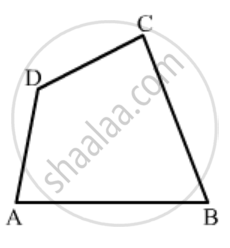
In Fig. 16.19, ABCD is a quadrilateral.
How many pairs of opposite sides are there?

In Fig. 16.20, find the measure of ∠MPN.
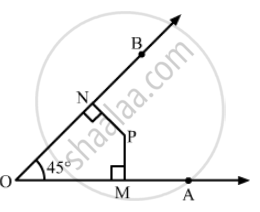
In a convex hexagon, prove that the sum of all interior angle is equal to twice the sum of its exterior angles formed by producing the sides in the same order.
Determine the number of sides of a polygon whose exterior and interior angles are in the ratio 1 : 5.
In the given figure, ABCD is a trapezium. Find the values of x and y.

If ABCD is a rectangle with ∠BAC = 32°, find the measure of ∠DBC.
Mark the correct alternative in each of the following:
The opposite sides of a quadrilateral have
In ΔABC, E is the mid-point of median AD such that BE produced meets AC at F. IF AC = 10.5 cm, then AF =
Angles of a quadrilateral are (4x)°, 5(x+2)°, (7x – 20)° and 6(x+3)°. Find :
(i) the value of x.
(ii) each angle of the quadrilateral.
In a trapezium ABCD, side AB is parallel to side DC. If ∠A = 78° and ∠C = 120. find angles B and D.
In a parallelogram ABCD, its diagonals AC and BD intersect each other at point O.
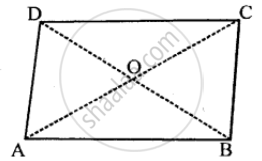
If AC = 12 cm and BD = 9 cm ; find; lengths of OA and OD.
Write two conditions that will make the adjoining figure a square.
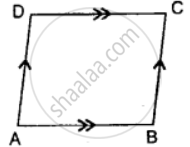
ΔPQR and ΔSQR are on the same base QR with P and S on opposite sides of line QR, such that area of ΔPQR is equal to the area of ΔSQR. Show that QR bisects PS.
In the figure, PQRS and PTVS are two cyclic quadrilaterals, If ∠QRS = 100°, then ∠TVS =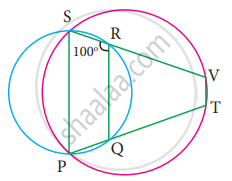
If one angle of a cyclic quadrilateral is 75°, then the opposite angle is
If bisectors of ∠A and ∠B of a quadrilateral ABCD intersect each other at P, of ∠B and ∠C at Q, of ∠C and ∠D at R and of ∠D and ∠A at S, then PQRS is a ______.
Which of the following is not true for a parallelogram?
D and E are the mid-points of the sides AB and AC respectively of ∆ABC. DE is produced to F. To prove that CF is equal and parallel to DA, we need an additional information which is ______.
Number of angles less than 180° in figure is ______ and their names are ______.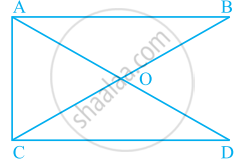
Using the information given, name the right angles in part of figure:
RT ⊥ ST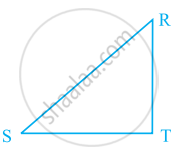
Using the information given, name the right angles in part of figure:
RS ⊥ RW
Using the information given, name the right angles in part of figure:
AC ⊥ BD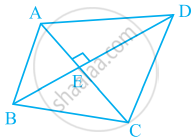
What conclusion can be drawn from part of given figure, if DC is the bisector of ∠ADB, CA ⊥ DA and CB ⊥ DB?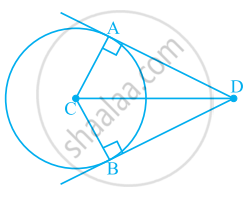
Can we have two obtuse angles whose sum is a complete angle? Why or why not?
